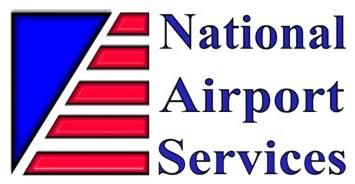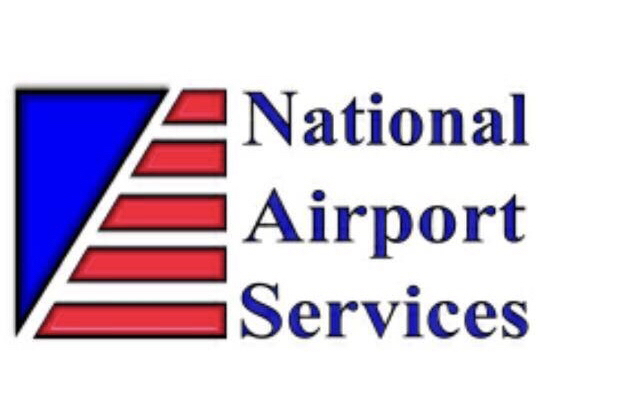Information
-
Airport Code:
-
Conducted On
-
Auditor
-
IMPORTANT NOTE: The check list of items covering this audit is listed under each fleet type category. Once this audit is completed, work orders for corrective actions will generated for discrepancies found. The unit identification number with the work order number is to be listed under each fleet category for future reference.
Vendor Parts Mark Up, Labor Rate and LOTO Verification
-
Verify and list labor rate amount. Also does current rate match as stated in the contract? Please state the labor rate amount.
-
Verify and list amount of mark up on parts. Does mark up match as stated in the contract? Please state the percentage of mark up.
-
Does contractor have LOTO procedure in place?
Verify United supplied parts and vendor supplied parts over $250 were installed
-
Were United supplied parts over $250 found to be installed? Please list the equipment ID numbers verified.
-
Were vendor supplied parts over $250 found to be installed? Please list the equipment ID numbers verified.
Motorized GSE
-
Cargo Tractors (please list unit ID numbers along with their corresponding work order numbers that will need corrective actions per the check lists below).<br><br>
-
Cargo Tractor General Maintenance: 1. Check condition of non-skid surfaces. 2. Check seat condition and proper mounting, Inspect (ORANGE) seat belts. 3. Inspect for broken glass (NO PRESENCE PLEXIGLASS), tire wear, parking brake holds while engine is running in gear, and that all lights are operational. 4. Inspect doors that they close and latch properly. If using cloth doors make sure doors are in good condition. 5. Ensure engine neutral safety working and gear shifter lever center rubber bushing is not worn out. 6. If equipped with a fire extinguisher must be B-C or Purple K only. 7. Ensure brake pedal is painted red with non-skid surface paint and that parking brake handles are painted red. Also check that service brakes are operational and has good pedal travel. 8. Check for hour meter reading and date marked on fuel and oil filters. Also check that battery is properly held down and using the proper crimp style battery cable ends. Visually inspect radiator fins are not plugged. Check anti restart ignition works properly. 9. Check steering components, Also ensure grease fittings for steering is greased. Over all visual inspection of the exterior to ensure no sharp metal anywhere that could cause lacerations. 10. On Toyota tractors ensure the green plug and fusible links are present on positive side of battery post and was not eliminated.
-
Cargo Tractor Safety Project: 1. On Toyota bag tractors ensure that both gas hood props / struts are present and operational. Also the factory hood strut is the recommendation. Check hood hold down rubber latches are operational. also if tractor is supposed to be equipped with primary and secondary hood latches, ensure they are operational. 2. Ensure fuel lines are not spliced on high pressure fuel systems. On older gasoline 6 cylinder engines the fuel line from carb to fuel pump should be solid steel line or steel braided flared to pump and carb with no splices.
-
Push Tractors (please list unit ID numbers along with their corresponding work order numbers that will need corrective actions per the check lists below).<br><br><br><br><br>
-
Push Tractor General Maintenance: 1. Check condition of non-skid surfaces. 2. Check seat condition and proper mounting, Inspect (ORANGE) seat belts. 3. Inspect for broken glass and NO USE OF PLEXIGLASS, tire wear, parking brake holds engine running in gear, and that all lights are operational. 4. Inspect doors that they close and latch properly. 5. Ensure engine neutral safety working and gear shifter lever center rubber bushing is not worn out. E-stops are operational. 6. If equipped with a fire extinguisher must be B-C or Purple K only. 7. Ensure brake pedal is painted red with non-skid surface paint and that parking brake handles are painted red. Also check that service brakes are operational and has good pedal travel. 8. Check that engine hood props and hold downs/latches are operational. 9. Check for hour meter reading and date marked on fuel and oil filters. Also check that battery is properly held down and using the proper crimp style battery cable ends. Visually inspect radiator fins are not plugged. Check anti restart ignition works properly. 10. Check steering components, Also ensure grease fittings for steering is greased. Over all visual inspection of the exterior to ensure no sharp metal anywhere that could cause lacerations.
-
Push Tractor Safety Projects: 1. Check condition and presence of aircraft effectivity decals on exterior of drivers and passenger side. 2. Inspect hitch front and rear to ensure they have chain lanyards attached to pins and that the hitches are equipped with operational cam locks for hitch pins.
-
Belt Loaders (please list unit ID numbers along with their corresponding work order numbers that will need corrective actions per the check lists below).<br><br><br><br><br>
-
Belt Loader General Maintenance: 1. Check for the presence of new style "Delta" conveyor front bumpers, rear step / rear conveyor bumper modification, front conveyor side guards. Also inspect rear roller pinch guard that it is 1/8'' or less gap from rear roller. 2. Inspect conveyor belt for excessive wear, check condition of non-skid surfaces, check bumper on sliding handrail and that the handrail slides properly. Check seat condition and proper mounting. Inspect (ORANGE) seat belts. 3. Check estop condition & operation, ensure belt operation works from all switch locations, check that belt operation stops when put in gear and check that belt stops when park brake is released. 4. Check brake pedal travel to ensure service brakes are operational. Ensure parking brake holds with engine running in gear. Check neutral safeties that belt will not operate in in gear and that engine will not start if lever is in gear. Also check to make sure gear shifter lever center rubber bushing is not worn out. 5. Check for worn tires, check lights, condition of hydraulic fluid from sight glass and if desiccant filter was replaced. Check for hour meter reading and date marked on fuel and oil filters. Also check that battery is properly held down and using the proper crimp style battery cable ends. Visually inspect radiator fins are not plugged. Check anti restart ignition works properly. Check hydraulic cylinders are holding and no leaks from cylinders. 6. Check steering components (remember the steering cylinder bushing), Also ensure grease fittings for components were greased. Over all visual inspection of the exterior to ensure no sharp metal anywhere that could cause lacerations. 7. If equipped with a fire extinguisher must be B-C or Purple K only. Ensure brake pedal is painted red with non-skid surface paint and that parking brake handles are painted red. 8. Ensure fuel lines are not spliced on high pressure fuel systems. On older gasoline 6 cylinder engines the fuel line from carb to fuel pump should be solid steel line or steel braided flared to pump and carb with no splices.
-
Ground Power Units (please list unit ID numbers along with their corresponding work order numbers that will need corrective actions per the check lists below).<br><br><br><br><br>
-
Ground Power General Maintenance: 1. Inspect for tire wear, parking brake holds, all lights are operational. 2. If equipped with a fire extinguisher must be B-C or Purple K only. 3. Check for hour meter reading and date marked on fuel and oil filters. Also check that battery is properly held down and using the proper crimp style battery cable ends. Visually inspect radiator fins are not plugged. Check anti restart ignition works properly. 4. Check steering linkage to ensure grease fittings for steering is greased. Over all visual inspection of the exterior to ensure no sharp metal anywhere that could cause lacerations. Check condition of tow bar tongue. Ensure that engine compartment door latches are operational.
-
Ground Power Safety Project: 1. Must have orange sock with mesh on end attached with lanyard. 2. Ensure 3 point connection decal is installed. 3. Check output cable condition and "Green Thermguard Head" condition (must not have multi strand output cable). Also cables are to be single jacketed with molded heads both 400 HZ and 28 volts. No head field repair kits allowed.
-
Mobile Air Starter and Mobile Air Conditioner (please list unit ID numbers along with their corresponding work order numbers that will need corrective actions per the check lists below).<br><br><br><br><br>
-
Air Start and Air Conditioner General Maintenance: 1. Inspect for tire wear, parking brake holds, all lights are operational. 2. If equipped with a fire extinguisher must be B-C or Purple K only. 3. Check for hour meter reading and date marked on fuel and oil filters. Also check that battery is properly held down and using the proper crimp style battery cable ends. Visually inspect radiator fins are not plugged. Check anti restart ignition works properly. 4. Check steering linkage to ensure grease fittings for steering is greased. Over all visual inspection of the exterior to ensure no sharp metal anywhere that could cause lacerations. Check condition of tow bar tongue. Ensure that engine compartment door latches are operational. 5. Air Starter: Check condition of air start hose, clamps and scuff jacket. Visual inspection of coupler for damage, all ball bearings are present and the disconnect handle moves freely (Sage AS couplers are the recommended replacement). For Air Conditioners inspect hose for rips and coupler for damage. (Page Couplers and ultra light duct hose is the recommended replacement on mobile A/C's).
-
Air Start and Air conditioner Safety Project: 1. Must have orange sock with mesh on end attached with lanyard. 2. Ensure 3 point connection decal is installed. 3. Air Starts must have stow nipples installed for proper hose coupler stowage (Sage has the replacement stow nipples). Also visually inspect and make sure that there are no screws missing/loose on the AS coupler body.
-
Soft Sided GSE (Vans, Pick-ups & SUV's also Misc. Golf Carts). (Please list unit ID numbers along with their corresponding work order numbers that will need corrective actions per the check lists below).<br><br><br><br><br>
-
Soft Sided & Misc. General Maintenance: 1. Inspect for broken glass, tire wear, presence of seat belts, parking brake and that all lights are operational. Also inspect door hinges for excessive wear and/or cracked body pillars where door hinges and striker mounts. Ensure engine neutral safety working and shifter is not worn out. Brake pedal and gas pedal non skid rubber pads installed. 2. If equipped with a fire extinguisher must be B-C or Purple K only. 3. NOTE: Golf Carts are required to have ORANGE seat belts as vans, pick ups and SUV's do not. 4. Ensure fuel lines are not spliced on high pressure fuel systems. On older gasoline 6 cylinder engines the fuel line from carb to fuel pump should be solid steel line or steel braided flared to pump and carb with no splices.
-
Motorized Mobile Stairs (please list unit ID numbers along with their corresponding work order numbers that will need corrective actions per the check lists below).<br> <br><br>
-
Motorized Stairs General Maintenance: 1. Inspect condition of stair treads and for non-skid surface. 2. inspect railing, overall structure and steps / ramp for cracks, presence of rubber bumpers on railing as well as their condition. 3. Make sure all stair lights are operational. Check seat condition and proper mounting. Inspect (ORANGE) seat belts. 4. Check estop condition & operation, 5. Check brake pedal travel to ensure service brakes are operational. Ensure parking brake holds with engine running in gear. Check neutral safety that engine will not start if lever is in gear. Also check to make sure gear shifter lever center rubber bushing is not worn out. 6. Check for worn tires, check lights, condition of hydraulic fluid from sight glass and if desiccant filter was replaced. Check for hour meter reading and date marked on fuel and oil filters. Also check that battery is properly held down and using the proper crimp style battery cable ends. Visually inspect radiator fins are not plugged. Check anti restart ignition works properly. Check hydraulic cylinders are holding and no leaks from cylinders. 7. Check steering components, Also ensure grease fittings for components were greased. Over all visual inspection of the exterior to ensure no sharp metal anywhere that could cause lacerations. 8. If equipped with a fire extinguisher must be B-C or Purple K only. Ensure brake pedal is painted red with non-skid surface paint and that parking brake handles are painted red. 9. Ensure fuel lines are not spliced on high pressure fuel systems. On older gasoline 6 cylinder engines the fuel line from carb to fuel pump should be solid steel line or steel braided flared to pump and carb with no splices.
-
Cargo Loader (please list unit ID numbers along with their corresponding work order numbers that will need corrective actions per the check lists below).<br><br><br>
-
Cargo Loader General Maintenance: 1. Check condition of non-skid surfaces. 2. Inspect: parking brake is operational, all lights are operational. 3. Ensure all safeties, E-stops are operational. 4. If equipped with a fire extinguisher must be B-C or Purple K only. 5. Check service brakes are operational. Check for operation AND visually inspect the condition of the stabilizers, bridge, platform, side & rear rollers and cluster rollers. Also check operation of bogie wheels. 6. Check for hour meter reading and date marked on fuel and oil filters. Also check that battery is properly held down and using the proper crimp style battery cable ends. Visually inspect radiator fins are not plugged. Check anti restart ignition works properly. 7. Check steering components, Also ensure grease fittings for steering is greased. Over all visual inspection of the exterior to ensure no sharp metal anywhere that could cause lacerations. 8. Check that all rubber bumpers are present and in good condition. Check handrail condition.
-
Cargo Loader Safety Project: 1. Check that power wing on bridge is present and operational. 2. Check that pinch points are properly marked per bulletin on bride and platform.
Non-Motorized GSE
-
Baggage / Cargo Carts (please list unit ID numbers along with their corresponding work order numbers that will need corrective actions per the check lists below).<br><br><br><br><br><br><br>
-
Bag Cart General Maintenance: 1. Curtains in good condition and not torn. 2. Brakes hold when tongue is in locked position. 3. Corner bumpers installed all four top corners. 4. All Tires in good condition. 5. Tongue painted yellow and in good condition. 6. Has fifth wheel been greased. 7. Visual check - cart is not leaning indicating a broken frame bracket or shock mount.
-
Bag Cart Safety Project: 1. Check and ensure the rear hitch is in good condition & secure and able to be locked when closed. 2. Ensure rear hitch is NOT the clam shell type hitch with a spring loaded release button. 3. Make sure "SET BRAKE" decal installed.
-
Mobile Jet Bridge Adapters / Valet Carts (Valet Carts also apply to the below general maintenance section when auditing). (Please list unit ID numbers along with their corresponding work order numbers that will need corrective actions per the check lists below).<br><br><br><br><br><br><br>
-
MBA and Valet Cart General Maintenance: 1. inspect overall appearance to ensure no damage or cracks to railing / structure , shelves or ramp. 2. Check wheels and make sure brake is operational.
-
MBA Safety Project: 1. Inspect condition of non-skid surface and make sure both ends of ramp are marked in yellow "CAUTION".
-
Non-Motorized Mobile Stairs (Also Work Stands and Disability Ramps). (Please list unit ID numbers along with their corresponding work order numbers that will need corrective actions per the check lists below).<br><br><br><br><br><br><br><br>
-
Non-Motorized Stairs (Work Stand and DA Ramp) General Maintenance: 1. Inspect condition of stair treads (ramp) for non-skid surface. 2. inspect railing, overall structure and steps / ramp for cracks, presence of rubber bumpers on railing as well as their condition. 3. Check brake, also if equipped with stair lights make sure all lights are operational. 4. Check operation of parking brake.
-
Potable Water Carts / Lavatory Carts (please list unit ID numbers along with their corresponding work order numbers that will need corrective actions per the check lists below).<br><br><br><br><br><br><br>
-
Potable Water and Lav Cart General Maintenance: 1. (NOTE: Potable water carts must be sanitized monthly). Potable water fill hose must be the proper food grade spec. 2. Ensure that Potable fill coupler is 3/4" and the Lavatory fill coupler is 1"inch. 3. Ensure that fill hoses on both Potable and Lav carts have the dust cap attached to the hose coupler with lanyard. Also both fill hoses are equipped to have an 100 lbs. "breakaway". 4. Ensure dump hose on Lav cart is not torn. 5. Proper clamps must be used when attaching coupler to fill hose on Lav and Potable water. Must be crimp style clamps. 6. No splicing potable fill hose with brass fittings. Stainless is permitted.
-
Potable Water and Lavatory Project: 1. On lavatory carts the blue juice tank by the fill must be clearly labeled "Blue Juice Only" and the potable water carts water tank fill must be labeled "Potable Water Only". 2. For potable water carts the approved in-line water meter must be used (original kit obtained through Parkan). The Fill-Rite meters are not approved.
-
Tail Stands (please list unit ID numbers along with their corresponding work order numbers that will need corrective actions per the check lists below).<br><br><br><br><br><br><br>
-
Tail Stand General Maintenance: 1. Visual inspection to ensure there is no signs of damage to tube & tip pad. 2. Also check to make sure handles and wheels are not broken / damaged.
-
Tow Bars (please list unit ID numbers along with their corresponding work order numbers that will need corrective actions per the check lists below).<br><br><br><br><br><br><br>
-
Tow Bar General Maintenance: 1. Inspect head for excessive wear and correct shear bolt installed. 2. Check handle locking mechanisms are operational (T-lock pin or auto safety latch). 3. If equipped with head slide pins, check for free movement, no signs of damage and they do lock in place (T-lock pin). 4. Inspect lunette eye for excessive play (if lunette eye has four bolts to secure to tube, ensure the four bolts are safety wired). 5. Inspect skid plates for excessive wear. Also inspect under side of tube and tow bar head for signs of damage from dragging on the pavement. 6. Overall visually inspect tow bar head, tube and carriage for physical damage. If equipped with a hydraulic pump ensure it's operational and not leaking. 7. Tow bar tube painted yellow and the head & lunette eye painted red. (Note: B737 Max 9/10 Tow bars the tube is painted orange with red head / eye.
Overall Audit Rating
-
Overall did the vendor perform satisfactory PM's and was the equipment audited found to be in good condition?<br><br>(Note: This audit rating is based on equipment that had a PM check completed with in the last 30 days. The check list Items inspected by auditor is detailed under each equipment category).













